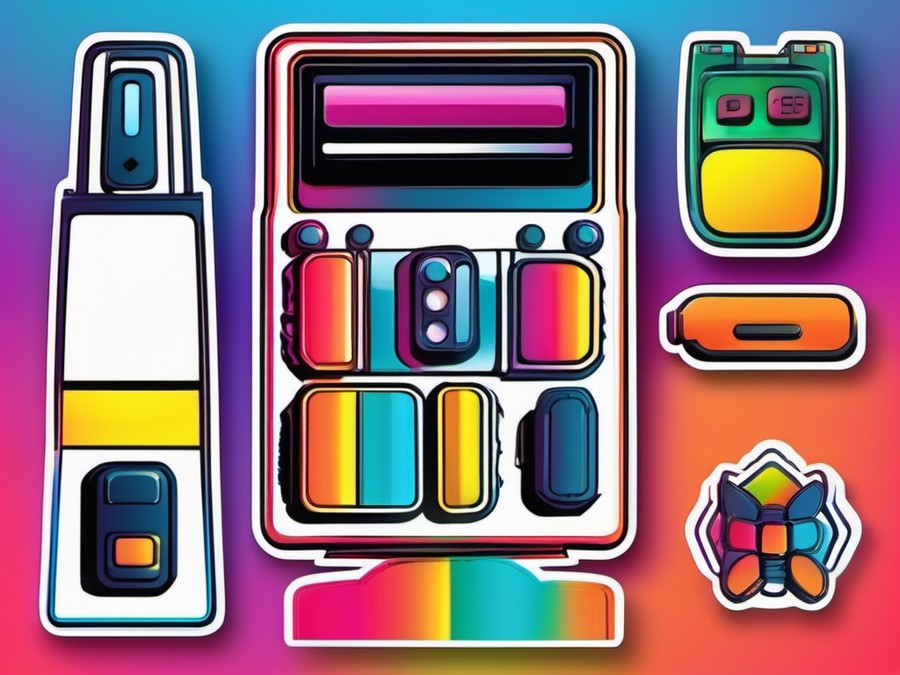· Charlotte Will · Remote Controls · 10 min read
What is a Voice-Activated Remote Control and How Does it Work?
Discover how voice-activated remote controls work and their benefits. Learn about setting them up, common commands, and troubleshooting tips. Enhance your smart home experience with this comprehensive guide.

Imagine sitting on your couch, binge-watching your favourite series. The remote is out of reach, and you don’t want to pause the action. What do you do? With a voice-activated remote control, you simply speak the command—“Turn up the volume” or “Pause”—and it happens instantly. No more scrambling for the remote or fumbling with tiny buttons. But how does this magic happen? Let’s dive into the world of voice-activated remotes and see how they work under the hood.
Introduction to Voice-Activated Remote Controls
The Evolution of Remote Controls
Remote controls have come a long way since the days of the simple, mechanical clickers. With the advent of infrared (IR) technology, remotes became more sophisticated, capable of sending commands over larger distances. Today, we’re seeing a shift towards voice-activated remote controls, which utilize advanced AI and speech recognition to enhance user experience.
Emergence of Voice-Activated Remotes
The concept of voice-activated remotes isn’t new, but it has gained traction with the rise of smart home devices and AI assistants. Companies like Amazon, Google, and Apple have integrated voice control into their remote devices, making it easier than ever to navigate your entertainment system with just your voice.
Understanding How Voice-Activated Remotes Work
Basic Components and Technology
At the core of a voice-activated remote is speech recognition technology. When you speak into the remote, it captures your voice and converts it into digital data. This data is then processed by a speech-to-text algorithm to understand what you’re saying.
Speech Recognition Mechanism
The speech recognition mechanism involves several steps. First, your voice is captured by a microphone array within the remote. The audio signal is then processed to filter out background noise and enhance the clarity of your voice. Advanced machine learning algorithms are used to translate this audio into text, which is then interpreted by the remote’s AI.
Integration with AI Assistants
A voice-activated remote often integrates with popular AI assistants like Amazon Alexa, Google Assistant, or Apple Siri. This integration allows the remote to not only interact with your TV but also control other smart home devices connected to the same assistant.
Step-by-Step Process of Voice Command Execution
Speech to Text Conversion
The remote uses advanced speech-to-text algorithms to convert your spoken commands into written text. These algorithms are trained on a vast amount of data to recognize different accents and dialects, making them highly accurate.
Command Interpretation
Once the command is converted into text, it’s interpreted by the AI in the remote. This involves understanding the context and intent behind your command. For example, if you say “Turn on the TV”, the AI needs to understand that “TV” refers to your television set and not some other device.
Action Execution
After interpreting the command, the AI sends it to your TV or other connected devices for execution. This could involve turning on the TV, changing channels, adjusting volume, or even playing a specific show.
Benefits of Using Voice-Activated Remotes
Enhanced Accessibility
One of the biggest advantages of voice-activated remotes is their accessibility. For seniors or people with disabilities, using a traditional remote can be challenging. Voice control removes these barriers, making it easy for anyone to operate their TV or other devices with simple voice commands.
Benefits for Seniors and Disabled Users
For seniors or individuals with limited mobility, voice-activated remotes can be a game-changer. They no longer need to struggle with small buttons or remember complex commands. A simple “Turn on the lights” can make their daily lives more comfortable and independent.
Increased Convenience
Hands-free operation is a significant advantage of voice-activated remotes. If your hands are occupied with food or other tasks, you can still control your TV or music system without breaking your focus.
Hands-Free Operation
Imagine you’re cooking dinner and want to change the song playing in the background. With a voice-activated remote, you can simply say “Next track” without having to wash your hands or find the remote.
Time and Effort Savings
Using voice commands can save you a lot of time and effort. Instead of scrolling through menus or pressing multiple buttons, you can get things done quickly with a simple command.
Quick and Efficient
Need to check the weather or news headlines? Just say “Show me the weather” or “Read the latest news”, and your voice-activated remote will display the information instantly.
Comparison with Traditional Remotes
Differences in User Experience
Using a voice-activated remote is quite different from using a traditional one. While traditional remotes require physical interaction and sometimes complex button presses, voice remotes rely on your vocal commands.
Pros and Cons of Each Type
Voice-Activated Remotes:
- Pros: Hands-free, accessible, quick.
- Cons: Dependent on good speech recognition, may not work in noisy environments.
Traditional Remotes:
- Pros: Simple, reliable, don’t require power.
- Cons: Require manual effort, can be complicated for some users.
When to Choose Voice-Activated Remotes
If you prioritize convenience, accessibility, or if you have multiple smart home devices, a voice-activated remote is an excellent choice. They are particularly beneficial for tech-savvy users who enjoy the latest gadgets and features.
Ideal Scenarios for Use
- Smart Home Integration: If you have other smart home devices like lights, thermostats, or locks, a voice-activated remote can control all of them with ease.
- Entertainment Centers: For users with complex entertainment systems, voice commands can simplify navigating through different devices and inputs.
Setting Up a Voice-Activated Remote Control
Initial Setup Process
Setting up your voice-activated remote is usually a straightforward process. Most remotes come with clear instructions and often involve pairing the remote with your TV or smart home hub.
Smart TV Connection
To start, you’ll likely need to connect your remote to your smart TV. This might involve putting the TV in pairing mode and following prompts on both devices. Once connected, you can start using voice commands.
Pairing with AI Assistants
Many voice-activated remotes also integrate with popular AI assistants. You’ll need to pair the remote with your preferred assistant (e.g., Amazon Alexa, Google Assistant) through their respective apps on your smartphone.
Customizing Voice Commands
Once set up, you can customize the voice commands to suit your preferences. Some remotes allow you to create personalized shortcuts for common actions, making the experience even more tailored.
Creating Personalized Shortcuts
For example, if you frequently watch a particular channel or use specific apps, you can create shortcuts like “Watch Channel 1” or “Open Netflix”. This makes your voice commands more efficient and intuitive.
Troubleshooting Common Issues
Despite their advanced technology, voice-activated remotes can sometimes face issues. Here are a few common problems and how to solve them:
Solving Connectivity Problems
If your remote isn’t connecting to your TV or other devices, ensure that both devices are powered on and within range. You may also need to reset the remote and try pairing again.
Ensuring Clear Speech Recognition
If the remote isn’t understanding your commands, it might be due to background noise or poor speech recognition. Try speaking clearly and closer to the remote, or use a voice command app to improve accuracy.
Exploring Voice Commands and Features
Basic Voice Commands for Everyday Use
Voice-activated remotes come with a variety of basic voice commands that you can use daily. These include turning the TV on or off, changing channels, adjusting volume, and more.
Turning the TV On/Off
A simple “Turn on the TV” or “Turn off the TV” command can control your television set with ease.
Changing Channels and Volumes
You can also use voice commands to change channels or adjust the volume. For example, “Change to Channel 5” or “Turn up the volume”.
Advanced Features and Integrations
Beyond basic commands, many voice-activated remotes offer advanced features that can greatly enhance your user experience.
Controlling Smart Home Devices
If you have a smart home setup, your voice-activated remote can control various devices like lights, thermostats, and locks. For example, you might say “Turn on the living room lights” or “Set the temperature to 72 degrees”.
Accessing Streaming Services
Many remotes also allow you to access and control streaming services with your voice. You can say “Open Netflix” or “Play the latest episode of my favourite show”.
Common Problems and Solutions
Speech Recognition Misunderstandings
One common issue with voice-activated remotes is that they might misunderstand your commands. This can often be solved by speaking more clearly and slowly.
Improving Accuracy with Clear Speech
Try to enunciate your words clearly and speak at a moderate pace. Avoid speaking too quickly, as this can make it harder for the remote to understand your commands.
Battery and Power Issues
Since voice-activated remotes rely on power, you might encounter battery issues from time to time.
Ensuring Proper Charging and Maintenance
To keep your remote running smoothly, make sure to charge it regularly. Some remotes come with charging docks or cradles that make this process easy.
Best Voice-Activated Remotes on the Market
Top Recommendations for Smart TV Users
When choosing a voice-activated remote, consider your specific needs and preferences. Here are some top recommendations for smart TV users:
Features and Specs to Look For
- Good Speech Recognition: Ensure the remote has advanced speech recognition capabilities to minimize misunderstandings.
- AI Integration: Look for remotes that integrate with popular AI assistants like Amazon Alexa or Google Assistant.
- Durability: A good remote should be durable and easy to use, with intuitive design features.
Considerations for Senior Users
For seniors or individuals with disabilities, certain features are especially important.
Simplicity and Accessibility in Design
- Easy-to-Read Buttons: Large, clearly marked buttons can make it easier for seniors to use the remote.
- Simple Commands: Ensure the remote supports simple, intuitive voice commands that are easy to remember.
- Hands-Free Operation: The ability to control devices with voice commands is crucial for users with mobility issues.
The Future of Voice-Activated Remote Controls
Advancements in Speech Recognition Technology
The future of voice-activated remote controls looks bright, with continuous advancements in speech recognition technology.
Predictions for Improved Accuracy
As AI and machine learning algorithms advance, we can expect even better accuracy in speech recognition. This will make voice-activated remotes more reliable and efficient than ever before.
Integration with Emerging Technologies
Voice-activated remotes are also poised to integrate with other emerging technologies, further enhancing their capabilities.
Compatibility with 5G and IoT Devices
5G technology promises faster, more reliable connections. This could make voice remotes even quicker and more responsive. Additionally, integration with IoT (Internet of Things) devices will allow for more comprehensive control over your entire smart home ecosystem.
Conclusion
Voice-activated remote controls represent a significant leap forward in user convenience and accessibility. By harnessing the power of AI and speech recognition, these remotes allow you to control your devices with simple voice commands. As the technology continues to evolve, we can expect even more advanced features and improved accuracy. Whether you’re a tech enthusiast or just looking to simplify your daily life, a voice-activated remote is an investment worth considering.
FAQs:
Can I use a voice-activated remote with any TV?
- Many voice remotes are compatible with various brands, but it’s best to check the specifications.
How does a voice-activated remote understand different accents?
- These remotes use advanced speech recognition algorithms trained on diverse data to recognize various accents.
What if my voice-activated remote isn’t responding?
- Ensure the remote is charged and properly paired with your TV. You may also need to reset the device.
Can I control other smart home devices with my voice-activated remote?
- Some remotes can be integrated with smart home hubs to control lights, thermostats, and more.
Are voice-activated remotes secure from eavesdropping?
- Most modern devices have encryption and privacy features to protect your voice commands.




